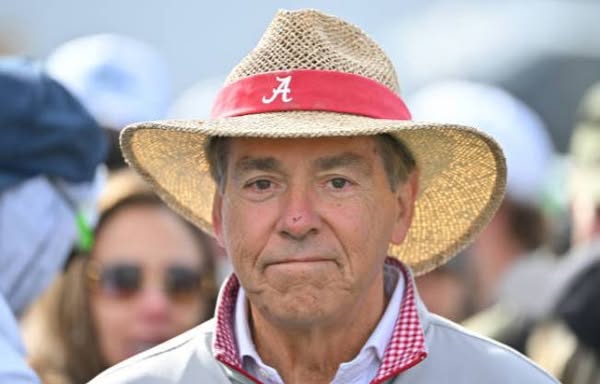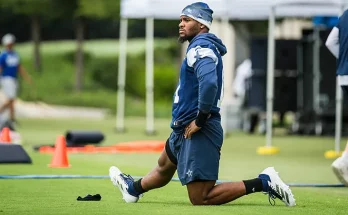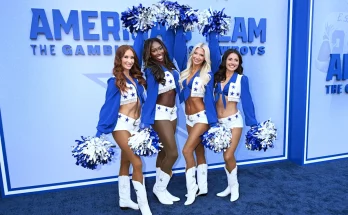In a twist that has sent shockwaves through the world of college football, former Alabama Crimson Tide head coach and legendary figure Nick Saban has announced his return to Tuscaloosa — not as the head coach on the sidelines, but in a powerful new role aimed at revitalizing the Alabama football program from the top down.
“I am coming back to revive the team and see us win again,” said Saban during an emotional press conference held at Bryant-Denny Stadium. “This place is home. I couldn’t sit back and watch the standard we built start to slip. Alabama football is a legacy worth fighting for, and I’m here to ensure it remains unmatched.”
This announcement marks a stunning development in the post-Saban era that had seen a changing of the guard after Saban’s retirement following the 2023 season. His successor, Kalen DeBoer, brought a modern approach to the Crimson Tide, but with mixed results, and recent underwhelming seasons have stirred concerns among boosters, fans, and former players alike. Now, with Saban’s return as Alabama’s new Executive Head of Football Operations, the Crimson Tide are signaling their intent to reclaim dominance.
A Legend Returns
Nick Saban’s return is more than just a personnel move—it’s a cultural reawakening. With seven national titles to his name, including six at Alabama, Saban redefined college football success. During his first tenure in Tuscaloosa (2007–2023), the Crimson Tide became synonymous with excellence, producing All-Americans, Heisman winners, and NFL stars in droves.
When Saban retired, he left behind a dynasty—but one that proved incredibly difficult to sustain without his presence. Despite early optimism around DeBoer, Alabama’s last two seasons were marked by inconsistency, key losses to rivals like Georgia and LSU, and disappointing finishes in the SEC standings. The fan base, known for its sky-high expectations, grew restless.
Saban, now 73, watched from the sidelines—figuratively and literally, as an analyst for ESPN—and the fire within him reignited. Insiders close to the program say the idea of returning began to form last fall, when Alabama lost to Auburn in the Iron Bowl, a defeat that particularly rankled Saban. His announcement came just weeks after an extensive conversation with Alabama athletic director Greg Byrne and University President Dr. Stuart Bell.
A New Role with Old Standards
Saban’s new title—Executive Head of Football Operations—might sound corporate, but it is anything but a desk job. He will oversee all facets of Alabama football, from player development and recruiting to coaching strategy and NIL operations. While DeBoer will technically retain the title of head coach, sources say Saban will “have final say” on all football matters.
“Coach DeBoer has my full support,” Saban clarified during the presser. “This is not about replacing him. It’s about helping him. This program is bigger than any one person, and I’m coming in to provide structure, vision, and the Alabama mindset that got us to the top.”
Behind closed doors, the move is being viewed as a “soft reset” — a way for Alabama to reignite its competitive fire without making drastic staff changes. Saban will help run practices, mentor staff, and lead high-profile recruiting efforts. In effect, Alabama is merging its past with its future.
Reaction from Tuscaloosa to the Nation
The news of Saban’s return was met with thunderous applause from current and former players, Alabama boosters, and fans across the college football landscape. Social media exploded with posts from former stars like Derrick Henry, Tua Tagovailoa, and DeVonta Smith.
“Coach Saban coming back? That’s the energy Bama needs,” tweeted Henry, now a star with the Baltimore Ravens. “Let’s get back to greatness.”
Even SEC rivals acknowledged the magnitude of the moment.
“Just when you thought the SEC was up for grabs again,” said Georgia head coach Kirby Smart, himself a Saban disciple. “He’s not done yet. Nobody does it better.”
Former Auburn and LSU coaches privately expressed concern about recruiting wars reigniting in the South. “If Saban is making house calls again, you better buckle up,” one unnamed coach said.
The State of Alabama Football: Why Saban Was Needed
Despite maintaining a top-10 recruiting class each year, Alabama’s recent seasons fell short of the program’s gold standard. In 2024, the Tide finished with a 9-4 record and were blown out by Texas in the Sugar Bowl. Key position battles, most notably at quarterback and linebacker, remained unresolved into midseason. Fans began questioning whether the Alabama mystique was fading.
The transfer portal also took a toll, with several five-star prospects leaving for programs like Ohio State, Texas, and LSU. For a program that prided itself on “The Process,” Alabama appeared to be lacking direction.
That’s when Saban decided to act.
Sources inside the program say Saban’s return was met with “overwhelming approval” by major donors and former players. Several name, image, and likeness (NIL) collectives immediately pledged new funding initiatives upon the news. One collective—“Crimson Legacy”—has already begun working directly with Saban to attract elite prospects.
The Rebuilding Blueprint
Saban’s return comes with a detailed blueprint for reviving the program:
- Recruiting Rejuvenation: Saban will personally meet with key 2026 and 2027 recruits. His presence alone is expected to flip several high-profile prospects, including a pair of five-star defensive backs leaning toward LSU.
- Program Culture Reset: Locker room accountability is a major focus. Saban wants to restore discipline, competition, and the “Bama Standard” that made every practice feel like a Saturday showdown.
- NIL Strategy: Saban will play a pivotal role in crafting player-focused NIL deals to ensure the program remains competitive in today’s financial arms race.
- NFL Pipeline Enhancement: Saban plans to reintroduce NFL-style development programs, which helped Alabama produce more than 40 first-round picks during his initial tenure.
- Alumni Involvement: Saban wants to bring former players back into the fold—literally. Derrick Henry, Mark Ingram, and even Julio Jones are reportedly in talks to join the program as mentors and consultants.
Saban 2.0: The Elder Statesman of College Football
While the first Nick Saban era was known for his fiery demeanor and obsessive attention to detail, this second chapter may showcase a more measured, strategic side. Think of it as Saban the architect—carefully guiding the next generation while ensuring his legacy is not diluted.
“I’ve seen where this game is headed,” Saban said. “And while college football is changing, that doesn’t mean we abandon what works. Hard work, discipline, accountability—that’s timeless.”
He has also expressed interest in helping reshape broader NCAA policy, especially around NIL and the transfer portal. Saban’s stature gives Alabama unique leverage in helping set the tone for how big-time programs adapt to this evolving era.
The Road Ahead: 2025 and Beyond
Saban’s immediate focus is the upcoming 2025 season. Alabama opens against Michigan in a high-stakes neutral-site clash in Atlanta. That game could set the tone for the entire campaign.
Internally, players are already energized. Quarterback prospect Keelon Russell, linebacker Qua Russaw, and defensive lineman James Smith—three potential breakout stars—have all expressed renewed commitment to Alabama since the announcement.
“This is like having General Patton come back to lead the troops,” said one assistant coach. “Nobody motivates, organizes, or builds a winning culture like Coach Saban.”
If Alabama manages to return to the College Football Playoff or, better yet, capture its 19th national title in the next two years, it will be a storybook ending to the greatest coaching legacy in sports history.
Final Thoughts: Why This Matters
Nick Saban returning to Alabama isn’t just about X’s and O’s. It’s about identity. It’s about tradition. It’s about refusing to accept mediocrity where excellence was once the norm. For Alabama fans, it’s a rebirth.
As the press conference wrapped up, Saban looked across the field he helped turn into hallowed ground and left the media with one final message:
“This is not a comeback. This is a continuation. I never truly left Alabama. And now, I’m back to finish what we started—with the same mission, the same fire, and the same belief: that the Crimson Tide is the standard.



